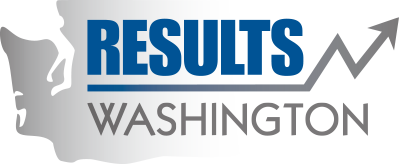Archived: Ferry Terminal Systems Past Due for Replacement
Data source: Washington State Department of Transportation
The chart above shows the percent of ferry terminal systems that are past due for replacement in relation to the target of 6%.
WSDOT Ferries serve as a critical link to communities separated by water or longer driving distance. It is the second largest (behind only Istanbul Fast Ferries based in Istanbul, Turkey) operating auto-ferry fleet in the world, carrying 10.6 million vehicles and 24.2 million ferry riders in fiscal year (FY) 2017. An “auto-ferry” is a boat that transports passengers and vehicles. WSDOT Ferries is the third largest transit system in Washington following King County Metro and Sound Transit. WSDOT operates 20 terminals on 10 routes, with a fleet of 22 auto-passenger ferries. Maintaining a functioning ferry system that is in good condition is essential to the efficient movement of goods and people in Washington. In addition, maintaining ferry vessel and terminal systems in good condition is important for maximizing on-time performance and trip reliability, which are essential to maintaining ridership levels.
In FY2017, 6.0% of ferry terminal systems were past due forreplacement, meeting the 6% target. This was an increase from 5.2% in FY2016.
WSDOT is employing the following strategies to control the percent of ferry terminal systems that need replacement:
Reprioritize projects as needed: Determining which final projects to include in a proposal can be challenging because WSDOT must develop project lists with limited funding available. WSDOT now utilizes an economic risk-based model to help prioritize project needs to aid in this process. For example, the Friday Harbor trestle was due for replacement in the 2015-2017 biennium, but after a more detailed economic risk-based evaluation, it was deferred outside the 10-year window. This, in theory, leaves funding for other higher priority projects.
Extend the useful life of systems: WSDOT is extending the life of selected systems through additional maintenance instead of performing the costly replacement of all the systems that are due. In the 2013-2015 biennium, WSDOT’s terminal maintenance budget was increased to help extend the life of candidate systems identified by an economic risk-based model . An example of this is the recent development of a painting program for steel structures at terminals that will defer the need to replace those structures.
Reduce reliability risks: The failure of terminal assets can have varying impacts to service reliability, ranging from no impact at all to canceling service on a route. Assets nearing the end of their useful life are most susceptible to failure. WSDOT uses an economic risk-based model for assets nearing the end of their useful life to prioritize replacement of assets with the highest impact to service reliability. During the 2017-2019 budget cycle, there placement of timber dolphins at the Eagle Harbor maintenance facility was deferred due to the low risk to service reliability if they fail. This allowed WSDOT to redirect money from the budget to assets with higher risks to service reliability.
Review asset conditions: All terminal assets are reviewed(inspected) on a one-, two- or three-year schedule. The condition of the assets WSDOT inspects is updated annually, and the useful remaining life is adjusted accordingly. The revised useful remaining life of the inspected assets is used to adjust the capital preservation program.
Begin to implement projects funded through the Connecting Washington package: During the 2015 session, the Legislature passed the Connecting Washington package, providing approximately $619 million to help meet some of the ferry system's most urgent needs. Connecting Washington fills critical funding gaps, allowing the ferry's system to move forward with major projects such as constructing new terminals at Colman Dock and Mukilteo and building a fourth Olympic Class ferry vessel.
For additional information about ferry terminal and vessel conditions, see WSDOT's quarterly accountability report, the Gray Notebook 69, pp. 20-21 at
http://wsdot.wa.gov/publications/fulltext/graynotebook/gray-notebook-Mar18.pdf#page=20
Learn more about WSDOT Ferries Division at http://www.wsdot.wa.gov/ferries/.
Reported by: Washington State Department of Transportation
NO INFORMATION
